18 Red Hot IT Products And Services MSPs Need To See
CRN breaks down 18 of the hottest vendor products and services that were on display during XChange+ 2021 that channel partners and MSPs need to know.

From edge computing software and power infrastructure to MSP integration automation and cybersecurity services, vendors attending XChange+ 2021 showed off a variety of innovative offerings that channel partners need to know about.
These products and services are helping MSPs boost sales and increase their services portfolio faster than ever before as the COVID-19 pandemic has made companies across the nation turn to solution providers to keep their businesses afloat, secure and ahead of the curve.
“We actually saw a tremendous amount of growth in terms of channel sales all across the country,” said Jade Surrette, chief marketing officer for CRN parent The Channel Company, citing new data from a survey of 200 solution providers. “It was really great to see that in a very challenging time, solution providers thrive.”
CRN breaks down 18 of the hottest vendor products and services that were on display during XChange+ 2021 this week that channel partners and MSPs need to take a look at.
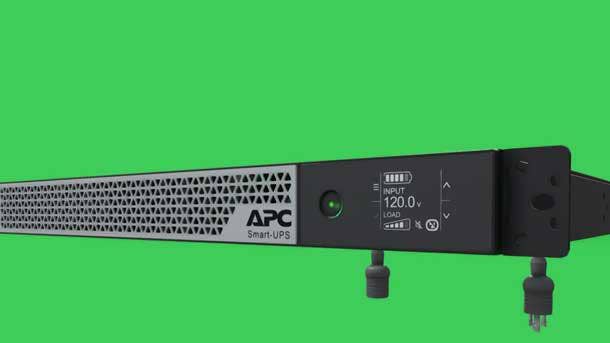
APC’s New Smart-UPS Ultra by Schneider Electric
Schneider Electric’s brand-new APC Smart-UPS Ultra is an edge computing game-changer. Dubbed as an industry first in 1U 3W UPS’s, the new APC Smart-UPS Ultra is 50 percent smaller and lighter than the company’s traditional UPS, meaning there’s more rack space inside edge environments for networking gear.
Smart-UPS Ultra also has three-times the battery life of its traditional VRLA batteries thanks to lithium-ion innovation, has two-times faster recharge power, and provides flexibility mounting options including rack, tower or wall/ceiling mounts to be install anywhere.
The new UPS utilizes Schneider Electric’s EcoStruxure remote monitoring, management and servicing offering that channel partners can leverage. Schneider’s cloud-based software delivers data-driven results to optimize performance, and enables wherever-you-go visibility across multiple UPS device.
“These innovations equate to about a 15 percent cost of ownership savings for your customer over the lifespan, but more importantly, I say this UPS is tomorrow-ready,” said Gail Fredrickson, director of channel marketing and strategy execution at Schneider Electric, at XChange+ 2021 this week.

Arcserve
Eden Prairie, Minn.-based Arcserve, which early this year merged with StorageCraft, has just updated its OneXafe Solo data protection appliance for SMB clients or midmarket remote office and branch office users by making the bundling of the StorageCraft Cloud to do the backups now an option, said Shaun Massey, director of sales engineering for North America.
“It was always bundled with the StorageCraft Cloud,” Massey told CRN. “Now it will not be included if customers want to use another cloud such as Wasabi, Microsoft Azure, or AWS.”
Arcserve will soon offer support for the object lock capability in Wasabi’s and AWS’ environments to store data in a WORM (write once, read many) format, he said.

Armor Anywhere
Armor Anywhere is an enterprise-grade cloud security and compliance platform with two new features that were added since the spring.
Armor Anywhere with EDR provides customers with an integrated, enterprise-grade endpoint detection and response capability from VMware Carbon Black. The platform can quickly detect and block behavioral anomalies, fileless and signatureless malware and ransomware in real time.
“Our Armor Anywhere platform is our main product and we launched an endpoint detection and response feature or service which installs software on somebody‘s laptop, desktop, mobile device,” said Ryan Smith, product evangelist at Armor, a cloud security company in Richardson, Texas . “ If it detects threat actors trying to drop ransomware on that machine, it‘s going to quarantine that machine for a bit and cut it off from the network to make sure it can’t spread the ransomware to other machines within that network.”
The second product, Armor Anywhere for Containers, launched this summer and furthers Armor’s ability to do threat detection and response but for container environments.
“Containers are being heavily adopted in the public cloud because it makes it easier for developers to get up and running,” Smith told CRN. “It‘s just a better way of developing software that a lot of companies are adopting.
“Those underlying parts of the server that you previously had to manage, you don‘t have to worry about it, you can just worry about the application you’re building,” he added. “A lot of companies are adopting these containers because they don’t want to be IT companies worried about IT infrastructure, they want to be web developers focused on building their business.”
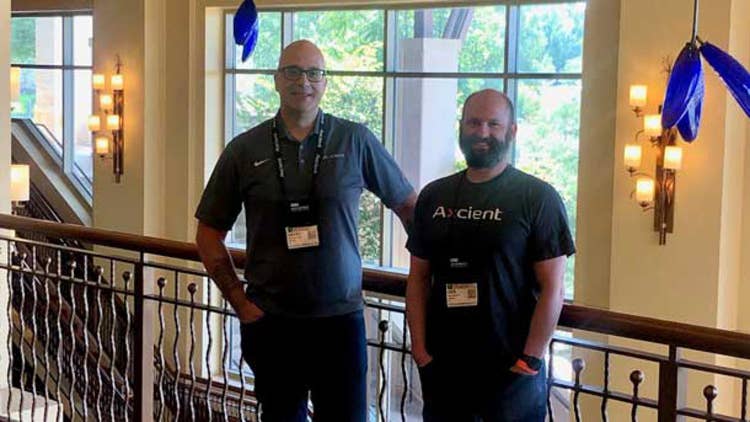
Axcient Local Cache
Denver-based data protection and business availability technology developer Axcient used XChange+ 2021 to start showing its new local cache addition to the company’s x360Recover Direct-to-Cloud offering to provide customers with a high-speed local recovery in case of a data outage without the need to purchase proprietary local hardware appliances.
Local cache provides the performance of a local data protection caching appliance while giving businesses their choice of local hardware ranging anywhere from a low-cost USB thumb drive to a spare NAS appliance, said Ben Nowacky (right, in photo), Axcient’s senior vice president of products.
“Local cache for Direct to Cloud takes the best of appliance-based backups, but eliminates the kludginess and expense,” Nowacky told CRN.
Axcient’s Direct to Cloud recovers data which was protected by storing copies on a cloud, but recovery depends on how fast a user’s internet connection is, Nowacky said. With local cache, the hottest data can be recovered instantly from the on-premises device, with older data recovered from the cloud, he said.
In one example showing the technology's power, Axcient CEO David Bennett told CRN that local cache saved a company board meeting.
“An hour before a remote board room presentation, I spilled coffee on my PC,” Bennett said. “My presentation brought together information from all the board members, but I couldn’t access the data on the PC. But with local cache, I could use another PC and be ready for the meeting.”

Binary Defense SIEM Features
Binary Defense plans to add Security Information and Event Management features to its Managed Detection and Response platform by the end of 2021 to expand its capabilities for SMB customers, according to CEO Mike Valentine. SMB and mid-market customers are increasingly required by either regulators or others in their supply chain to have SIEM-like capabilities in place to protect their business.
Smaller customers aren’t prepared either financially or from a staffing perspective to deploy the existing SIEM tools available in the market today, and as a result, most of Binary Defense’s customers aren’t currently using a SIEM, according to Valentine. Adding SIEM features will allow Binary Defense to expand from the SMB to the mid-market and fulfill the supply chain requirements of larger customers.
Binary Defense clients want an easy, one-stop shop where they can shore up their environment, he said, and making SIEM capabilities available on the MDR platform should help achieve that. The company’s agent can be deployed on 1,000 endpoints in just 30 minutes, and Binary Defense’s Security Operations Center (SOC) provides around the clock monitoring and management for customers, Valentine said.

Crewhu
Boca Raton, Fla.-based Crewhu develops an employee recognition and customer satisfaction platform aimed at helping MSPs improve their customer service capabilities. The Crewhu platform integrates with many of the top MSP professional services automation, documentation, and VoIP platform in such a way that it can measure several factors that keep teams motivated, particularly when working with customers, said CEO Stephen Spiegel (left, in photo).
“MSPs with the right people and processes in place do the best in terms of teamwork,” Spiegel told CRN. “And having the right recognition and rewards programs in place helps make this happen.”
Ryan Denning, Crewhu’s vice president of sales, told CRN that the right recognition helps teams work together and with clients better.
“When you can publicly recognize people on a daily basis, they will engage more,” he said. “And that makes it more profitable for the business as a whole. We believe the best companies have strong company cultures and the right people and processes. It’s not just having the right technology stack.”
Crewhu already integrates with platforms from ConnectWise, Autotask, Kaseya, IT Glue, Microsoft Teams, and BrightGauge. Later this month, the company expects to better automate the process by which employees can use their feedback points to procure prizes ranging from free personal time off to lunch with the CEO on a yacht, Denning said.
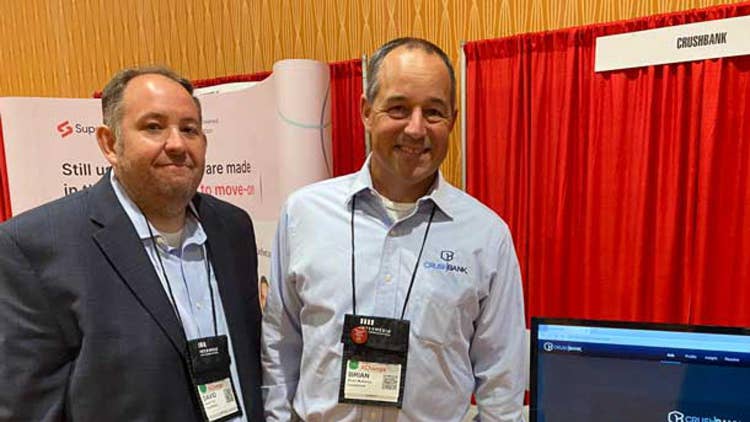
CrushBank Resolve
CrushBank Resolve is an automated AI layer for ConnectWise Manage specifically designed for the service port and was launched in June. When an IT expert clicks on a ticket, the AI layer automatically reads the ticket and performs a search on concepts in the ticket.
The automated search retrieves the past tickets and the actions that were put into that specific ticket in order to solve the problem.
“In a split second it comes back with all the tickets and all the configs,” said Brian Mullaney, CRO of CrushBank, a software company based out of Syosset, New York.
“It would pull back from ConnectWise, from IT Glue, from SharePoint from any number of systems that you run. Most of the data you have is unsearchable and we bring it back in a moment‘s notice,” Mullaney told CRN.
When a user clicks on a ticket in the service board, CrushBank Resolve automatically throws a query string back to IBM’s Watson and then it returns the most relevant tickets, configurations, and documents that the MSP has used to solve the problem before. That brings back the most relevant information related to that ticket.
“Fifty percent of an [engineer’s] time is spent looking for information,” he said. “If you can get that down to 15 or 20 percent, the rest of that [time] goes into efficiency.”
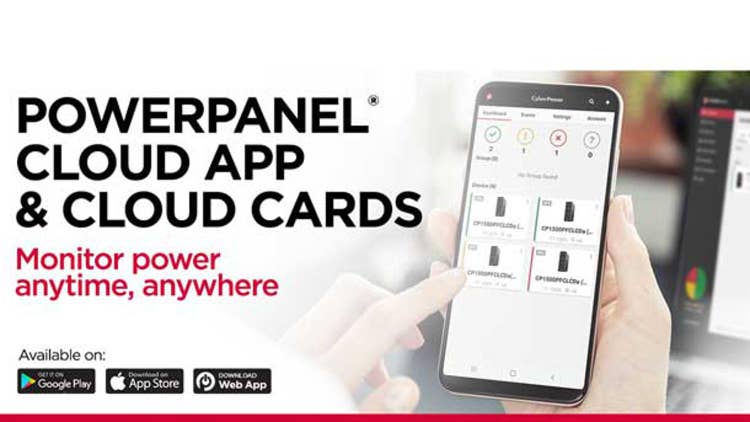
CyberPower Systems’ New PowerPanel Cloud App
Power protection and power management specialist CyberPower Systems recently launched its new PowerPanel Cloud app which enables remote monitoring of the company’s UPS system from anywhere.
Designed for iOS and Android mobile devices as well as desktop applications, CyberPower’s new cloud application simplifies power monitoring of one or more CyberPower UPS systems to help reduce IT resources and gain operating efficiencies.
With the PowerPanel Cloud app, UPS systems are monitored from a colorized dashboard that provides monitoring of each unit’s status, including instant problem recognition and power conditions such as battery capacity and estimated runtime. The application is targeting the SMB market including retailers and restaurants that rely on digital cash registers and other point-of-sale (POS) systems.
The new cloud application is enabled wirelessly with PowerPanel Cloud cards for each UPS system. CyberPower Systems is providing the new application free of charge to customers and can be download from the Apple App and Google Play stores. The company is also offering flexible licensing options.
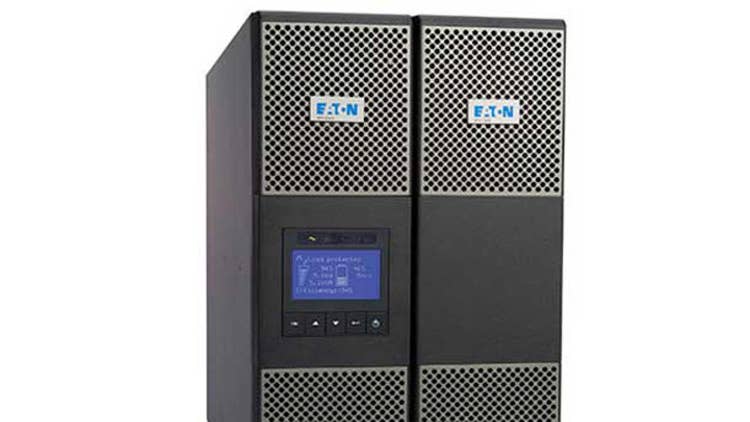
Eaton’s New 9PX UPS
Power management standout Eaton, which recently acquired Tripp Lite for $1.65 billion, launched its new 9PX lithium-ion UPS last month. Eaton’s new UPS provides longer battery life and a smaller footprint than valve regulated lead-acid (VRLA) battery-powered UPS technology, targeting distributed and edge environments as well as industrial applications ranging from healthcare to education.
Eaton’s new 9PX lithium-ion UPS offers seamless integration for virtual-machine-centric management and disaster preparedness in the event of outages. It has a life expectancy of eight to ten years with increased reliability and a smaller footprint compared to VRLA-powered UPSs. The power company said the new lithium-ion battery innovation for its UPSs provides longer battery life to enable customers to “set it and forget it” to require little on-site support from IT staff, data center professionals and maintenance personnel.
Customers can purchase the new UPS with Eaton’s Gigabit Network Card (Network-M2) which enables secure, connected capabilities and compatibility with Eaton’s PredictPulse™ remote monitoring service for real-time power monitoring and management.
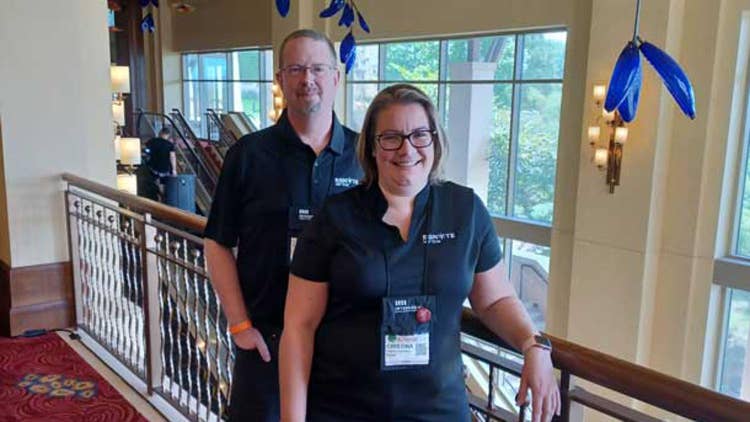
Egnyte
Egnyte, the Mountain View, Calif.-based developer of a unified platform to help manage, secure, and govern businesses’ data across any cloud or any device from anywhere, is getting ready to launch a specialized solution aimed specifically at the architecture, engineering, and construction market.
Eric Anthony, director of Egnyte’s MSP community and engagement, said the company is targeting that specific niche because users in that space need specialized solutions to solve unique issues related to large file sizes and the amount of remote collaboration such businesses engage in.
“There are a lot of problems shifting the large architecture, engineering, and construction files,” Anthony told CRN. “Traditional email attachments don’t work. And employees often collaborate on those files from remote trailers, so it’s hard to connect.”
Security is also an issue, Anthony said. “If building plans are compromised, a company is open to breaches,” he said.
Cristina Carretero, senior manager and channel marketing leader at Egnyte, told CRN that Egnyte will roll out a partner program related to the new technology some time in the fourth quarter.

Evo Security Privileged Access And Password Management
Evo Security plans to debut a password manager and release an updated version of its privileged access management (PAM) offering in the fourth quarter of 2021, according to CEO Michael Roth. SMBs have overspent on point products in the identity space and need to start thinking like enterprises, who’ve been engaged with identity from a more holistic sense, Roth said.
As the attack surface accelerates toward MSPs and their SMB customers, clients need to adopt a similar mentality as their enterprise brethren and find a way to look at disparate parts of their IT infrastructure. Evo Security overhauled its elevated access tool to address the needs of key channel stakeholders, and the works follows investments the company made into multi-factor authentication and single sign-on.
In 2022, Roth said Evo Security plans to focus on enriching the collection of information that’s been aggregated into the company’s technology to help the company take proactive and pre-emptive action. Aggregating and centralizing the rich insights derived from integrations with IT infrastructure vendors will make it easier for Evo customers to determine how they can most effectively strengthen security.
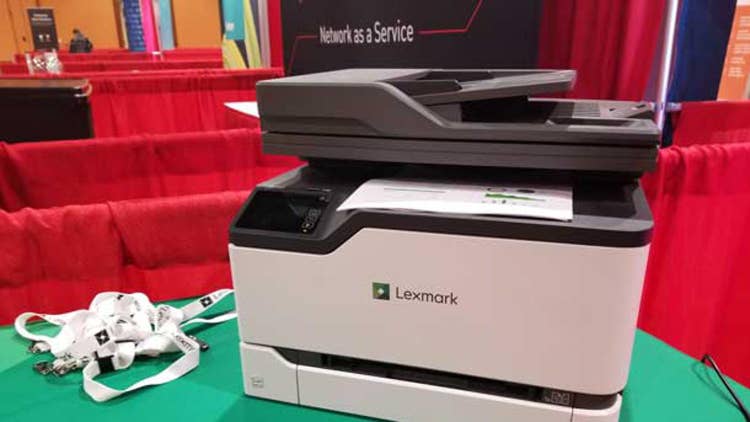
Lexmark Cloud Services
Lexmark’s suite of cloud printing services is targeted at small companies, large enterprises and any other print environment, according to the Lexington, Ky.-based printer manufacturer.
The company’s cloud services include secure print release to protect confidential information and prevent unclaimed documents sitting at printers.
Its Cloud Fleet Management service aims to make printer configuration easier and allow printer management remotely. And users gain new visibility into printing practices and workflows to reduce printing costs, according to Lexmark.
In June, Lexmark added third-party support and new guest print access for Cloud Print Management service users, and it added home screen customization and expanded supply level monitoring for Cloud Fleet Management users.
Cloud Print Infrastructure as a Service (CPI) by Lexmark uses cloud and internet of things (IoT) technology to reduce device selection risk, give uninterrupted uptime and simplify user support, all with a subscription billing model, according to the company.
Lexmark continues to invest in its cloud offerings. In April, the manufacturer started a phased global rollout Cloud Bridge to increase access to managed print services for enterprise customers in complex network environments.

Park Place Technologies
Park Place Technologies provides data center services including lifecycle services to keep equipment running, monitoring services to make sure the equipment is running properly, discovery services to help see the state of a data center’s equipment, network analytics services, application support services, and ParkView Server Support services targeting Windows, VMware, and Linux environments.
Jeff McCullough, Park Place’s global vice president of partner and alliance sales, told CRN that the Cleveland, Ohio-based company sells maintenance services that are deployed in a SaaS fashion and charged for on a subscription basis.
McCullough told CRN Park Place will launch its first formal partner program, the Uptime Partner Program, in September. That program will include a partner portal to register opportunities and make it easier to work with customers, he said.
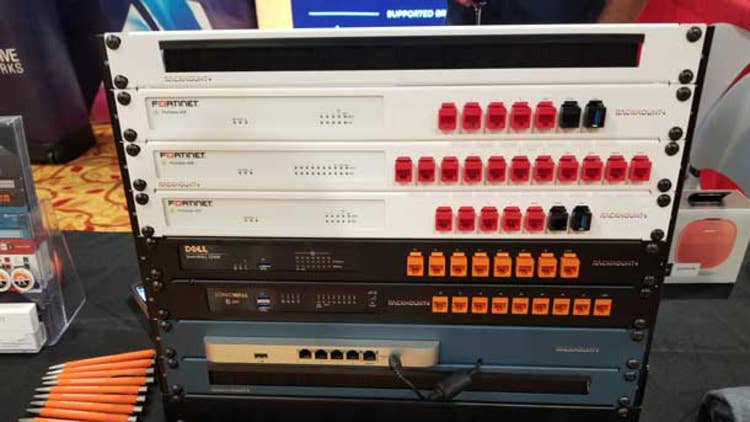
Rackmount.IT’s Rack Mount Kits
With vendor rack mounts sometimes amounting to simple ear brackets that leave ports in the back and power supplies dangling, Rackmount.IT offers a kit that aims to solve some of the headaches of desktop firewalls.
Rackmount.IT – which was founded in 2010 and has offices in The Netherlands and Austin, Texas -- offers rack mount kits to bring network interfaces to the front, a fixed power supply to decrease the change of outage and custom air flow cutouts to avoid overheating, according to the company.
The company’s industrial rack mount kits add shielded cables and shielded CAT6 couplers to protect against high frequencies.
Installation takes five minutes, according to the company. And Rackmount.IT offers custom designs and colors. Supported brands include Hewlett Packard Enterprise, Fortinet and Palo Alto Networks.
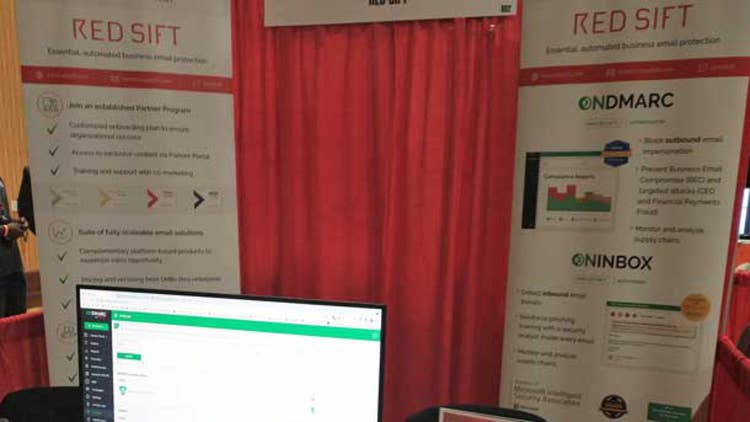
Red Sift Lookalike Domain Services
Red Sift plans to launch services for brand protection and lookalike (or cousin) domains later this year to build upon the defense against fraudulent attacks it already provides to domains owned by clients, said Senior Vice President of Strategy Chuck Swenberg. Given Red Sift’s strength in working with DNS-based security and large-scale data protection, Swenberg said attackers are migrating to lookalike domains.
Adversaries are trying to impersonate legitimate domains by – for instance – replacing a “1” with a “l” in the domain name, Swenberg said. In response, Red Sift plans to apply a tremendous amount of automated capacity to scanningfor domains to minor typographical changes as well as aggressively report to authorities any lookalike domains spotted in hopes of getting them taken down, Swenberg said.
It’s very easy for adversaries to register and set up a lookalike domain, and then use that malicious domain as a launch point for phishing attacks or seeding malware, Swenberg said. Most organizations already register domains that are associated with their brand, but impersonation attempts don’t necessarily have to take place on a domain owned by the victim, complicating things for defenders.
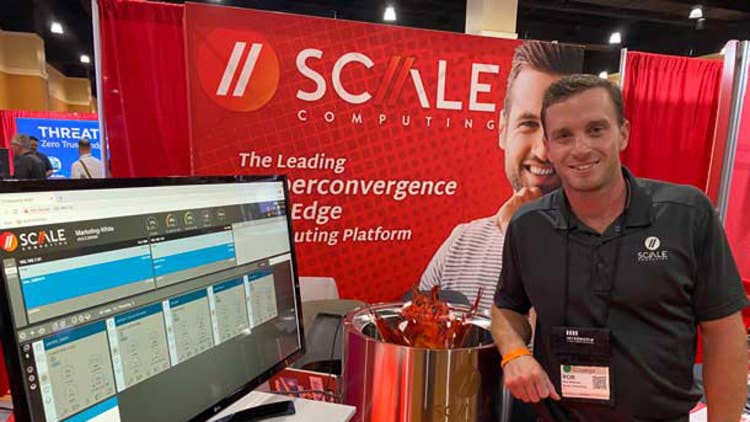
Scale Computing EdgeHE150
Scale Computing’s HE150 appliance combines Scale Computing’s self-healing platform for autonomously running applications at the edge, with a small, all-flash, NVMe storage-based compute appliance that delivers simplicity, efficiency and enterprise-ready virtualization.
The product launched two months ago and provides a fully functional, integrated platform for running applications including high availability clustering, rolling upgrades and integrated data protection
Robbie Wittman, regional sales manager for Scale Computing, a computer software company in Indianapolis, Indiana gave an example restaurants, coffees shops and grocery store chains that have data that‘s being created at the edge, like point of sale.
“If you had a single server running the workloads at that restaurant, and that server went down, your credit cards would go down, your payment processing would go down, any kind of signage that you had would go down,” Wittman told CRN.
“With our system, if the hardware itself fails, everything automatically replicates to the remaining two nodes, and everyone‘s up and running. If they care about their data and data means money, this keeps their money up and running.”
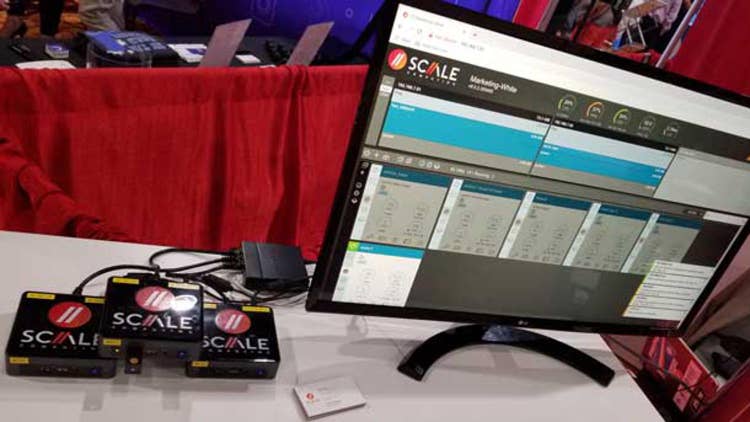
Scale Computing’s HC3 Virtualization Platform
Scale Computing’s goal is to offer a simpler version of the hyperconverged architecture. Combining servers, storage, virtualization and backup and disaster recovery, the HC3 infrastructure aims to decrease downtime and make any computing environment manageable.
According to the company, users can add new appliances into a running cluster within minutes and without disruption to running workloads. Customers have used HC3 for disaster-recovery-as-a-service (DRaaS) and remote monitoring and management (RMM). Managed service providers can provide customers dozens or hundreds of virtual machines (VMs) for remote use. And small clusters and single nodes can be deployed at the edge.
Indianapolis-based Scale Computing has strategic partnerships with tech heavyweights including Google Cloud and Lenovo.
Scale Computing’s CEO Jeff Ready -- No. 7 on CRN’s list of the top 25 IT innovators of 2021 -- recently told CRN that VMware midmarket customers and businesses seeking optimized edge computing solutions are turning to Scale Computing in droves. The company’s vice president of marketing, Marlena Fernández, is a 2021 Women of the Channel honoree.
In June, CRN named the Scale Computing HC3 Edge among the 10 hottest hyperconverged infrastructure systems of 2021 (so far).

ScopeStack
Greenville, S.C.-based ScopeStack develops a platform to help MSPs and other solution providers automate the scoping, pricing, and level of effort required when preparing to offer services to clients.
Jon Scott (right, in photo) said solution providers have traditionally depended on Excel spreadsheet and Word documents to scope out services, which is very much a manual process.
“Our web-based platform sits between an MSP’s CRM and PSH or project management tools to automate the process,” Scott told CRN.
This is an important capability for solution providers, said Roy Harmon, ScopeStack’s head of marketing.
“[This automation] is something MSPs are really looking for,” Harmon told CRN. “but MSPs in many cases don’t know what to Google find it.”
ScopeStack currently integrates with ConnectWise Manage and Microsoft Dynamics, and in the near future will also be integrated with Autotask, Kaseya, and several distributor platforms, Scott said.